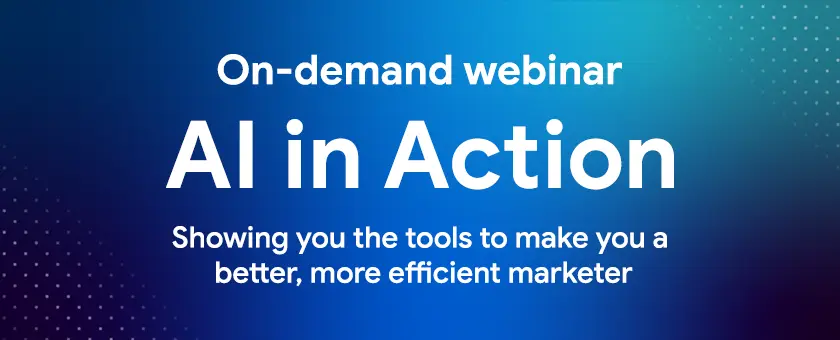Like investing early for retirement, every degree of temperature change we can negate will exponentially improve1 our future outlook. Consequently, to reduce our impact, the sooner we begin reducing our emissions the better.
Changes made now may not be big, but they will have the greatest chance of changing our trajectory, and, like any habit, little and often can lead to big gains. For several reasons, which I’ll get into later, it’s businesses that should be leading the way. The hardest part is to start.
Although it’s not actually that hard.
Perception has shifted. What was seen by business as a costly undertaking for little benefit is now regularly being seen as an opportunity. Global and national frameworks are in place to provide guidance to big corporates and small businesses alike, so no one need feel overwhelmed or left out.
And people, especially our younger generations, those that turn the cogs every day to deliver business value, are engaged in the narrative of climate change and looking for ways to do their part.

What are some of the standout benefits of aiming for net zero?
It can help to attract talent
A company that shows an understanding of its impact on the environment and that it cares enough to do something about it, is more attractive to a growing pool of talent. As society’s expectations change so must businesses adapt to remain competitive.
It can attract and retain business
An increasing number of companies are pursuing a supply chain that share the same goals and values. Reducing emissions can have strategic benefits too and might make the difference between becoming a trusted supplier or staying at the bottom of the procurement pile.
It can drive innovation and improvement
Pursuing net zero can act as a catalyst for business improvement, cost savings and innovation. Indirectly improving your bottom line. Yes, there may be some initial investment required up front, but with appropriate research and planning there are opportunities to decrease costs and increase profits while at the same time reducing harmful emissions. It isn’t necessarily a trade-off.
It will help you sleep better at night
Well, this will obviously depend on the person, but it will at least help some of your employees sleep better knowing that their employer is doing what they can about one of the pressing issues of our time.

How do we start?
It can be a little daunting for businesses to understand the best way to get started on the journey to net zero, particularly measuring your current GHG emissions, but there are plenty of resources and support available.
We found that committing to a net zero pledge can help to set an end goal, as well as providing some key resources to help measure your current impact.
RedEye signed up to the UNFCCC Climate Neutral Now pledge and SME Climate Commitment in 2021, pledging to reach net zero by 2030, which gave us the tools (such as a comprehensive carbon footprint calculator) and impetus to report more accurately on our recent emissions and ultimately plan to achieve our goal.
These are recognised initiatives that promote measuring, reducing, contributing and subsequently reporting on progress, along with producing a plan to reduce carbon equivalent emissions, framing your journey to your net zero end goal.
The UNFCCC calculator also provides enough detail to prompt thought about obscure areas of emissions that may otherwise go unaccounted for.
From there it’s a case of gathering the data from across your business, estimating as best you can where your data isn’t comprehensive by following appropriate guidance (such as that laid out by the GHG protocol), and putting in place improvements to measure more accurately and reduce emissions as you go.
Progress reports are submitted annually thereafter, and the UNFCCC will provide you with a badge to demonstrate your participation transparently indicating your progress towards each section. Our badge for 2020 is shown below.

What are scope 1, 2 & 3 emissions?
Scope 1 & 2 emissions are those emissions which a company has control over. This includes direct emissions (scope 1) from a business’s production facilities and vehicles, and indirect emissions resulting from generation of purchased energy (scope 2) such as electricity and fuel for heating.
It is more straight forward to plan to reduce these by either reducing what you use or using greener alternatives (changing light bulbs, producing your own energy, optimising operational efficiency).
Scope 3 emissions are all other indirect emissions and can be more challenging to quantify and influence, such as those of your suppliers and the emissions they generate to provide their services to you.
It can also be challenging to establish the quantity of these emissions that belong in your report (i.e. What emissions are involved in your supplier providing the products or services to you specifically? Are they net zero themselves?).
Tackling these may involve switching suppliers, helping them to offset their emissions, or finding ways to bring certain activities in house when your goals are not aligned.

Where can we get help?
There will be some areas which are confusing to quantify or very difficult to tackle. Independent organisations can be brought in to assess or verify your assessment of your business’s emissions, adding greater credibility to your reports and internal confidence in your progress.
An example is Carbon Footprint Verification (CFV) run by the BSI.
The government are also encouraging businesses and academic institutions to work together to find innovative solutions to reduction challenges.
An example of this is the ECO-I NW programme including Manchester Metropolitan University, among others, that support SMEs with understanding how to identify opportunities to reduce their emissions and also go further, by supporting them with reduction projects that require technological innovation.

What about offsetting?
Offsetting is a mechanism which can be used to support a clear plan to net zero but should not be seen as a shortcut to avoiding the work to measure and reduce your businesses emissions.
UNFCCC, as part of their Climate Neutral Now initiative, along with other organisations, encourage offsetting but make it clear that offsetting must complement rather than replace an iterative plan to reduce your business’s emissions.
The UN Carbon Offset Platform is one such example of a recognised platform for buying carbon credits.
In summary…
Becoming climate neutral may seem challenging to complete alongside normal day to day operations, but it presents a lot of great opportunities to improve how you work and may set you apart from the competition or help you stay relevant with market expectations.
The frameworks are there to guide you, are reasonable in scope and with a little internal resource dedicated to it, you can provide your business with some great insights and something to celebrate.
For those considering taking this challenge and signing up to a pledge, I hope this overview has helped provide some confidence that it’s not out of reach, regardless of the size of your business.
Enjoy the journey!
[1] The Economic Costs of Climate Change | EARTH 103: Earth in the Future (psu.edu)



